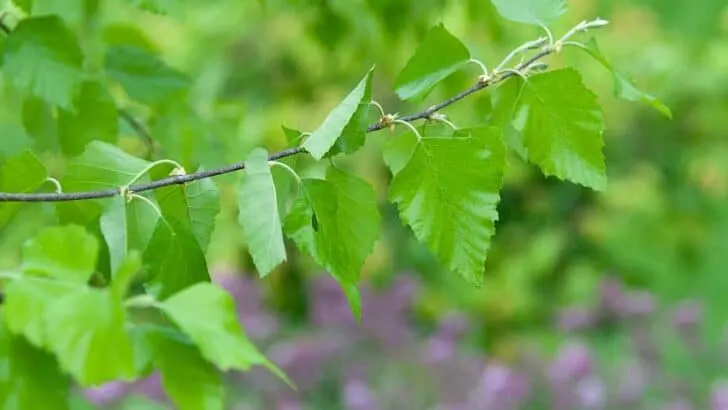Bumps on the leaves of river birch. River birch, or red birch, is an elegant, fast-growing tree that does best in moist conditions. It belongs to the Betula genus.
River birches are generally self-sufficient and disease-resistant and, unlike cedar trees which need care, don’t require too much looking after. They often live for more than a century and a half!
That said, these hardy trees are not invincible.
One of the first signs that a river birch is not in good condition is the appearance of lumps or bumps on the leaves of river birch.
If you’re concerned because your river birch leaves have gone from being beautiful, delicate, silvery things to looking like they have a case of chicken pox, you’ve come to the right place.
This article will review the possible causes of bumps on birch leaves and then discuss how to identify and treat them.
Table of Contents
What are the Bumps on the Leaves of my River Birch?
Bumps on river birch leaves may be light green mite galls that you can treat with pruning and insecticide. Orange pustule-like bumps on the birch leaves’ undersides are caused by fungal rust. Black raised lumps on birch leaves’ tops are sooty mold. The latter two problems are treated with pruning and applying fungicide.
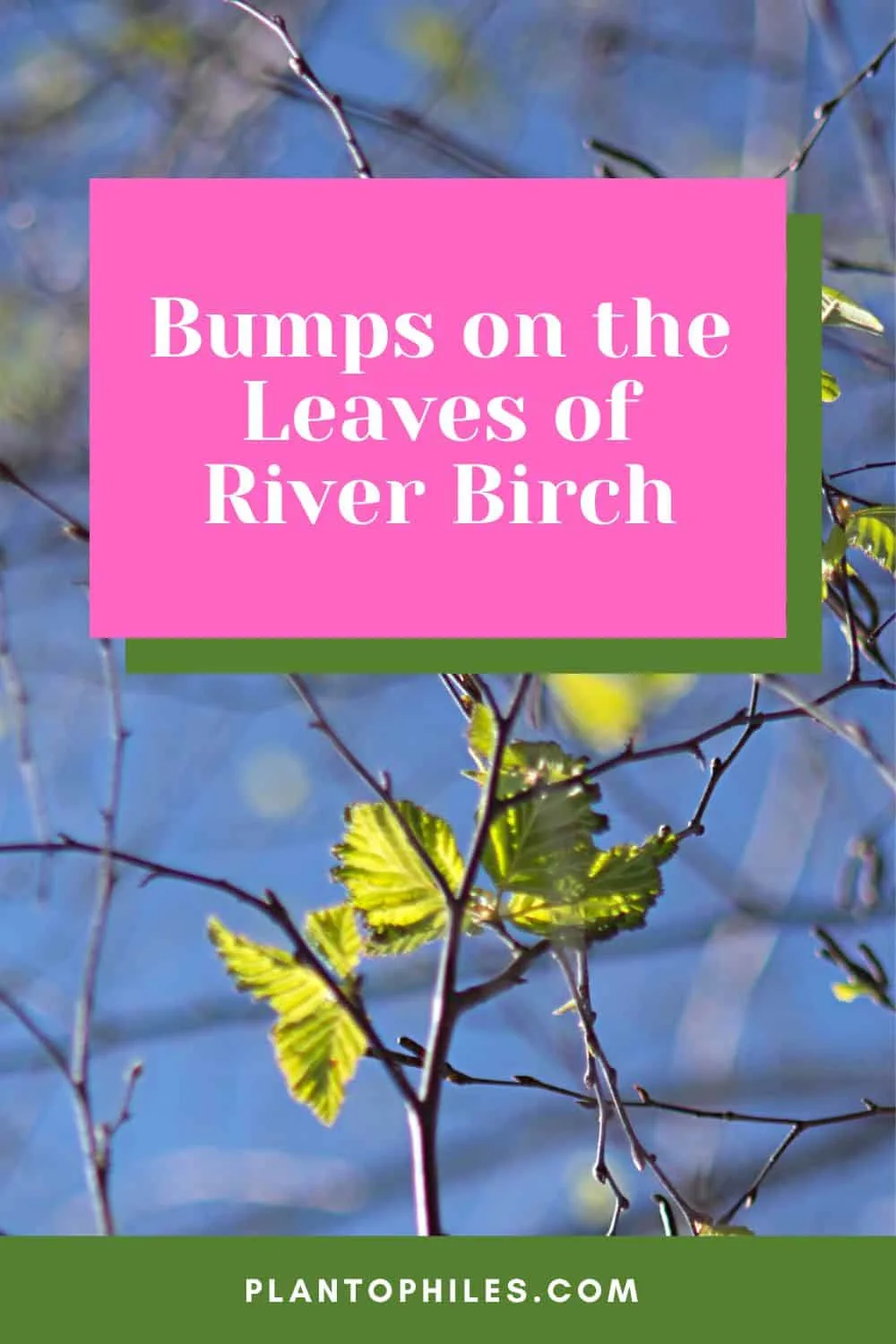
Birch Leaves
Birch leaves are thin and simple. They alternate on the petioles. The leaves contain saponins, tannins, and flavonoids, according to Weleda New Zealand. The leaves themselves are diamond shaped and green and glossy.
Bumps on River Birch Caused by Insects
Bumps on tree leaves caused by gall midges, gall wasps, mites, and aphids are called leaf galls.
There are over 1,500 species of insect that cause galls to appear on newly unfurling tree leaves in the early spring.
Galls are abnormal plant tissue formations that resemble little balls, knobs, lumps, or warts, depending on the insect responsible for creating them.
Identification
River birch leaf galls are smaller than some other varieties of leaf galls.
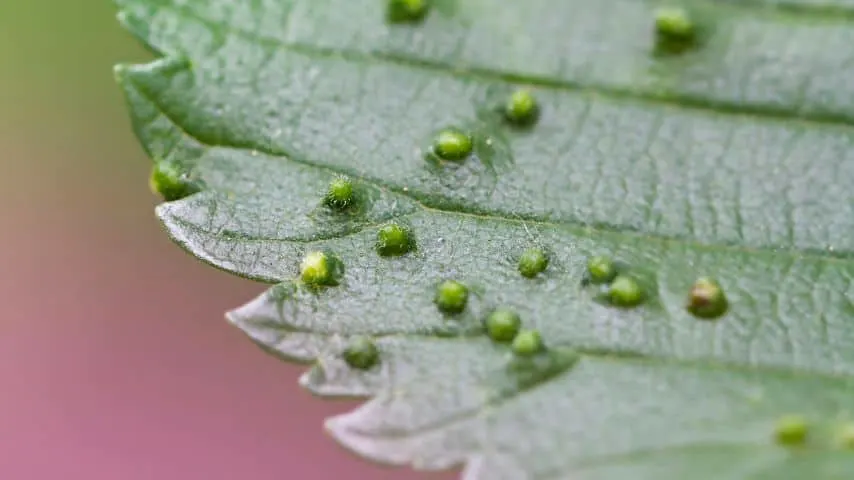
They are light green when they first appear and are only between 0.2 and 0.8 cm in diameter.
Harmfulness
Specific tree varieties are prone to infestations from specific insects.
Leaf galls on river birch are caused by an eriophyid mite, which produces wart-like green bumps by feeding off the new leaf growth and then laying eggs inside the emerging galls.
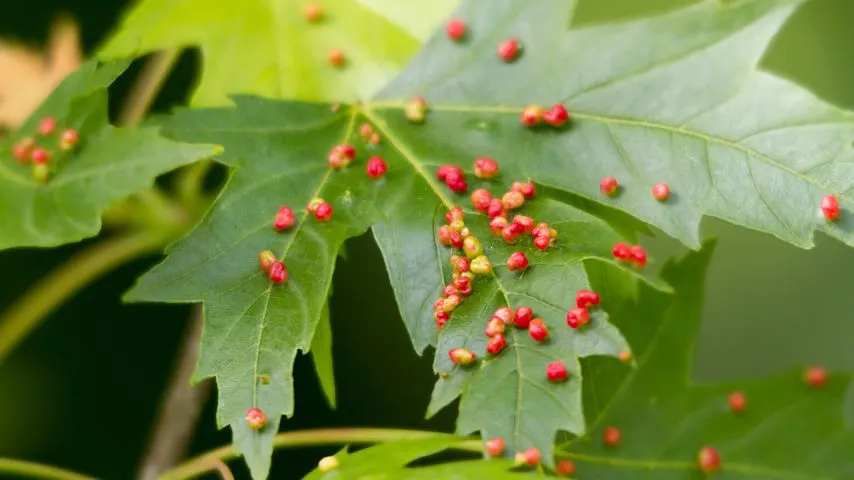
Fortunately, as with bumps on the leaves of maple trees, the galls are largely a cosmetic issue.
But, that doesn’t mean you’ll relax while mites nibble your birch leaves to bits.
Follow the treatment recommendations below, which are similar to those for getting rid of bumps on hibiscus leaves, to get rid of the problem as quickly as possible.
Treatment
If your tree is still young, try to clip away any badly affected leaves and then treat the tree with an organic insecticide.
Unfortunately, once the galls have developed, you won’t be able to cure your leaves within a single growing season.
The best thing you can do if you have birch leaf galls is focused on taking preventative measures before the following spring.
In the autumn, when the tree leaves drop, rake them up off the ground and dispose of them in a sealed black bag.
Then, the following year, treat your tree with a round of a mite-specific insecticide in late February before the new leaf growth appears.
Bumps on River Birch caused by Rust
Rust is a fungal infection that affects trees with lush foliage when the spores are left to fester during rainfall.
Rust is made worse when a tree’s canopy doesn’t get enough air circulation.
Identification
If you notice little orange lumps growing on the undersides of the leaves of your river birch, it probably means that your tree has rust.
You may also see masses of orange spores.
Harmfulness
Rust is not generally life-threatening for river birches. However, it can still harm a tree’s health and prevent it from thriving.
If left to spread uncontrolled, this fungus will cause yellow leaves to develop and will lead to leaf drop.
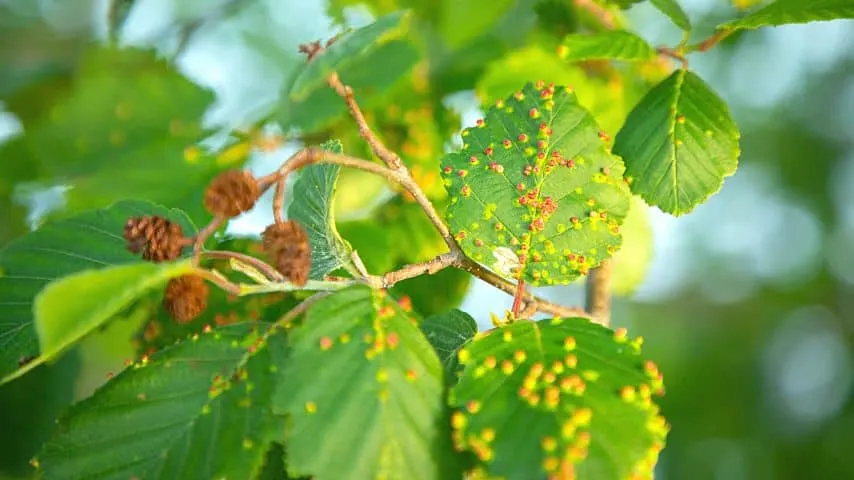
If the situation deteriorates further, your birch may struggle to photosynthesize because there is not enough surface area for a healthy leaf to be exposed to the sun.
Treatment
Because rust thrives in a wet or moist environment, improve the soil drainage around your affected river birch.
If the problem worsens over time and the orange spores don’t clear, spray your birch leaves with an organic fungicide.
Always follow the specific instructions for the product you use when applying anti-fungal solutions.
To prevent the problem from reoccurring next season, thin out your tree’s upper canopy during the dormant winter period. This method improves the speed at which your birch leaves dry out.
Bumps on River Birch Caused by Sooty Mold
Sooty mold looks just as unfortunate as it sounds.
If black, raised lumps appear on the top of your river birch leaves, your tree may suffer from sooty mold.
Identification
Sooty mold is a black fungus that grows over and around places where insects have damaged leaves by feeding on them.
As a result, leaves with sooty mold are covered in black, raised lumps.
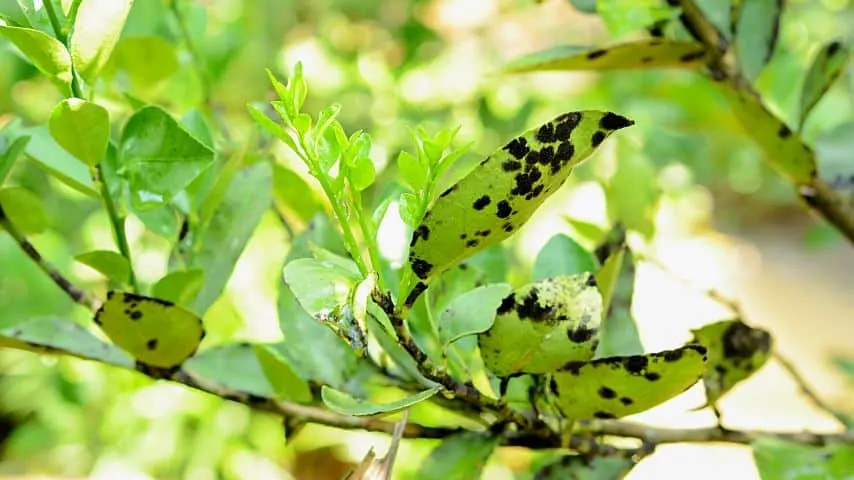
The mold is feeding on the honeydew left by the insects, so to clear the infection, you need to focus on getting the insects away from your tree.
Harmfulness
If left unchecked, sooty mold can prevent a birch tree from photosynthesizing properly, leading to leaf drop.
However, if treatment advice is followed correctly, river birches with sooty mold can be restored to perfect health throughout just a single growing season.
Treatment
Check your local horticultural store for an anti-insect tape that can be wrapped around the bottom of the trunks of affected birch trees.
Then, use an organic insecticide to treat your birch leaves.
If the birch is small, use a fit-for-purpose eco-horticultural oil to wipe down the leaves.
Follow the application of oil with a damp cloth to keep the oil from burning your leaves.
Once the insects have left your tree and enough air is circulating through the canopy, the mold will clear on its own accord.
Read about the bumps on the leaves of lilly pilly next.
Conclusion On Bumps on the Leaves of River Birch
The reason for bumps on the leave of a river birch are:
- Light green mite galls – Treat with an insecticide
- Fungal rust causes orange pustule-like bumps – Treat with a fungicide
- Scooty mold cause black raised lumps – Treat with a fungicide

Daniel has been a plant enthusiast for over 20 years. He owns hundreds of houseplants and prepares for the chili growing seasons yearly with great anticipation. His favorite plants are plant species in the Araceae family, such as Monstera, Philodendron, and Anthurium. He also loves gardening and is growing hot peppers, tomatoes, and many more vegetables.

